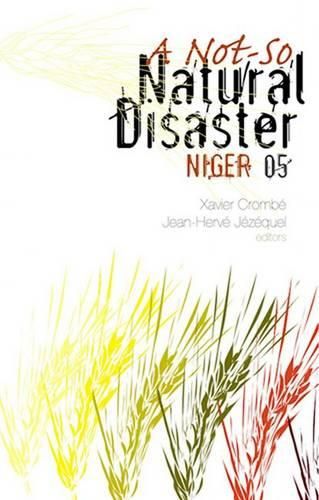Readings Newsletter
Become a Readings Member to make your shopping experience even easier.
Sign in or sign up for free!
You’re not far away from qualifying for FREE standard shipping within Australia
You’ve qualified for FREE standard shipping within Australia
The cart is loading…






Although the term natural disaster applies to the December 2004 tsunami, the images of huge devastation that were televised after the tragedy probably seemed a good deal less natural to us than those of starving African children we saw seven months later, from Niger. The tsunami was perceived as so un-natural that it provoked an immediate, unprecedented international outpouring of sympathy. It took many months, by contrast, for the story of a new famine in the Sahel to make headlines. From the outset its causes were apparent in media coverage-droughts and locust invasions have always seemed the everyday lot of people living in this region. The link between the crisis and its natural causes was so self-evident that the first news reports tended to omit the point that, in reality, drought and the locust invasion had overtaken the Sahel region a year earlier. Nevertheless it became Medecins Sans Frontieres’ aim to see it acknowledged-not in the press, but among those institutions responsible for food security in Niger-that the deaths of tens of thousands of children as a result of malnutrition would not be considered natural phenomenon, still less a normal one. For this reason the 2005 crisis was a unique experience for the humanitarian organisation. MSF treated more than 60,000 children suffering from severe malnutrition-one of the most ambitious operations in its history. It also found itself embroiled in controversy among the various national and international actors involved in managing the crisis in Niger over the summer of 2005. At the very moment MSF was straining to mobilise other actors to intervene in what it judged to be an emergency situation, the NGO was undergoing heated argument and intense inquiry as to the exact nature of the situation it was attempting to manage. Public, operational involvement of this kind–outside the conflict zones where MSF traditionally and typically intervenes, moreover–called for some form of reflection. This book makes no claim whatsoever to be comprehensive, or to provide a final, definitive version of the truth with respect to the 2005 famine in Niger. Instead the contributors endeavor to shed new light on a multifaceted crisis.
$9.00 standard shipping within Australia
FREE standard shipping within Australia for orders over $100.00
Express & International shipping calculated at checkout
Although the term natural disaster applies to the December 2004 tsunami, the images of huge devastation that were televised after the tragedy probably seemed a good deal less natural to us than those of starving African children we saw seven months later, from Niger. The tsunami was perceived as so un-natural that it provoked an immediate, unprecedented international outpouring of sympathy. It took many months, by contrast, for the story of a new famine in the Sahel to make headlines. From the outset its causes were apparent in media coverage-droughts and locust invasions have always seemed the everyday lot of people living in this region. The link between the crisis and its natural causes was so self-evident that the first news reports tended to omit the point that, in reality, drought and the locust invasion had overtaken the Sahel region a year earlier. Nevertheless it became Medecins Sans Frontieres’ aim to see it acknowledged-not in the press, but among those institutions responsible for food security in Niger-that the deaths of tens of thousands of children as a result of malnutrition would not be considered natural phenomenon, still less a normal one. For this reason the 2005 crisis was a unique experience for the humanitarian organisation. MSF treated more than 60,000 children suffering from severe malnutrition-one of the most ambitious operations in its history. It also found itself embroiled in controversy among the various national and international actors involved in managing the crisis in Niger over the summer of 2005. At the very moment MSF was straining to mobilise other actors to intervene in what it judged to be an emergency situation, the NGO was undergoing heated argument and intense inquiry as to the exact nature of the situation it was attempting to manage. Public, operational involvement of this kind–outside the conflict zones where MSF traditionally and typically intervenes, moreover–called for some form of reflection. This book makes no claim whatsoever to be comprehensive, or to provide a final, definitive version of the truth with respect to the 2005 famine in Niger. Instead the contributors endeavor to shed new light on a multifaceted crisis.